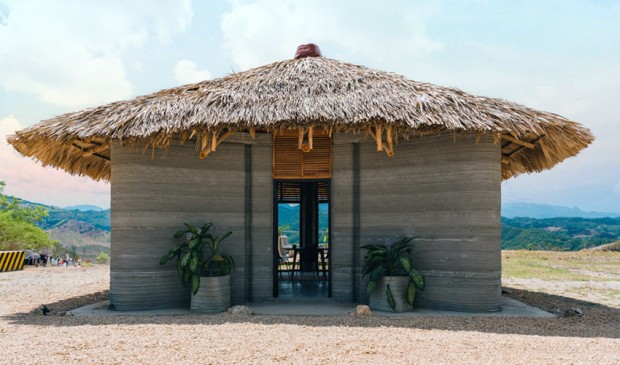Guatemala experiences significant seismic activity, with about one thousand earthquakes occurring each year. Thus, in this region, a newly completed building was constructed utilizing 3D printing technology in 26 hours. The project, undertaken by COBOD, a leading expert in 3D printing technology, showcases not only the speed but also the seismic resilience of the newly constructed structure.

(Photo : 3D Natives/COBOD)
Guatemala's First 3D-Printed Building
The one-story, 527-square-foot residence in Guatemala was finished in a mere 26 hours, carried out over seven days. As mentioned, a partnership between the cement manufacturer Progreso and COBOD was necessary to actualize the project. By a predetermined blueprint, COBOD's BOD2 printer extruded strata of a cement-like compound to construct the house's exterior. In addition to installing windows, electricity, and plumbing, human builders erected the typical Guatemalan house roof made from palm thatching.
The house's architecture, including the curving walls and flexible, lightweight roof, appears to be earthquake-resistant. COBOD revealed that the curving walls, in particular, would have been highly challenging without 3D printing, given that it would have taken more than 26 hours.
Accordingly, the capacity to construct houses that are impervious to adverse weather conditions rapidly and effortlessly could significantly impact the lives of numerous individuals, given that such occurrences are becoming more frequent due to shifting weather patterns induced by global warming.
On the other hand, humans have utilized 3D printing in numerous ways besides expediting the construction of structures. Other businesses are repurposing spent coffee grounds into home items, fabricating artificial limbs, fabricating animal teeth to dissuade poachers, and even constructing buildings for space research.
Also Read: Hudson's Site Becomes Detroit's Second Tallest Building as Final Steel Beam is Installed
Earthquake in Guatemala
There is a significant amount of seismic activity in Guatemala. According to statistics from the past fourteen years, about one thousand earthquakes occur annually in Guatemala, and our earthquake archive goes back to 1900. Over the last century, Guatemala has seen at least fourteen earthquakes of a magnitude greater than seven. This reportedly indicates that earthquakes of this magnitude occur seldom, most likely on average, once every five to ten years.
Moreover, Guatemala's history is marked by the presence of earthquakes in significant ways. Antigua, the island's former capital, was struck by a powerful earthquake in 1773, which resulted in the destruction of many buildings. As a result, the city officials decided to relocate rather than rebuild. Guatemala City was founded in 1776.
However, they did not go far enough because Antigua, Guatemala City, and Quetzaltenango are all located on the Montague and Chixoy-Polochic fault complex, which is prone to earthquakes. The most devastating earthquake ever occurred in 1976, with the most potent hits occurring in the vicinity of Guatemala City.
As stated, although earthquakes are hardly a 'show-stopper' for tourism, they happen occasionally. Based on the statistics, it is improbable that you will experience anything more than a slight tremor in your body. Seismic activity in 2012 claimed the lives of 39 individuals, the deadliest total since 1976.
Related Article: World's First 3D-Printed Mosque in Saudi Arabia Completed in Just 6 Months







